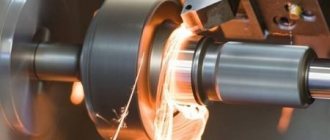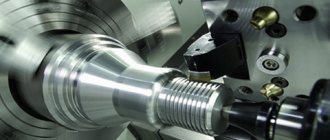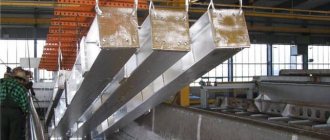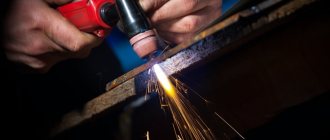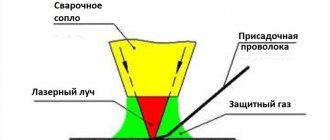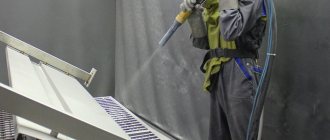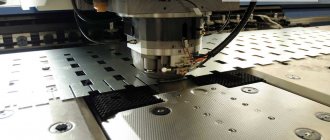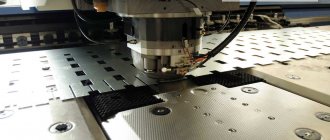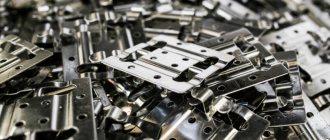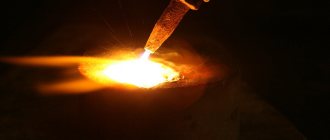If you need to clean something quickly and efficiently, then sandblasting is the best option. Although it is most often used for industrial purposes, it is also useful in the home. This cleaning method removes both old paint and rust from surfaces.
The sandblasting method is an indispensable tool in skilled hands, but can be dangerous in incompetent hands. In this article, we will take a closer look at this cleaning method and the most common mistakes, and also tell you how to avoid them.
What kind of compressor is needed for a sandblasting machine: basics of choice
The compressor used to equip the sandblasting machine is the most important element, the correct choice of which largely determines the efficiency of the entire system. The technical characteristics of this device also have a direct impact on the performance of the processing performed and on such an important parameter as the consumption of abrasive material.
A sandblasting unit and a compressor are two essential components of one metalworking system
What is metal sandblasting used for?
Sandblasting is a key metalworking process. It is used to solve the following problems:
- Cleaning metal workpieces from corrosion and exfoliated scale. Additionally, plaque, dirt, and decorative coatings are removed.
- Removing the fat film to carry out other technological operations on the part.
- Cleaning car bodies from traces of oxidation.
- Creating an unusual structure on the surface of metal products.
To create an unusual pattern on the surface of metal workpieces, large, durable abrasive material is used. It can be corundum, steel or cast iron shot. These abrasives can be reused. Large particles leave indentations in the material, resulting in an unusual texture.
Compressor selection
The sandblasting compressor is the most expensive device among all the elements of the system used to perform such a task. When equipping a device for sandblasting, many, guided by a natural desire to save money, purchase the cheapest compressors, the technical characteristics of which do not meet the required parameters.
The use of a compressor, the technical parameters of which do not correspond to the characteristics of the sandblasting machine used, leads to the fact that the speed of processing is significantly reduced, the consumption of abrasive material per unit of surface area processed increases, as a result, the deadlines for completing the work are missed and their cost increases.
That is why specialists, when choosing a compressor for sandblasting, evaluate not only the volume of work to be carried out, but also the deadlines that must be met. To select a compressor, special tables are most often used, which show the ratios of such parameters as:
- the pressure that the compressor is capable of providing;
- level of compressed air consumption by a sandblasting machine;
- consumption of abrasive material per unit area of the surface being treated;
- speed of processing.
Abrasive, air consumption and productivity
The data on the consumption of abrasive material, which are indicated in such tables, are indicative for the reason that the value of this parameter is influenced by many factors. Such factors, in particular, are: the type of surface being treated, the nature and thickness of the layer of dirt or old coating being cleaned, the height to which it is necessary to raise the abrasive mixture, the experience and qualifications of the work performer. Despite the not very high accuracy of this parameter given in the tables, they give an idea of which compressor to choose.
Advantages of sandblasting preparation for painting
- High speed. Sandblasting is indispensable when you need to paint large metal structures. Cleaning them with any other method will take a lot of time, but sandblasting equipment allows you to process a large area in a short time. Sandblasting is about 8-9 times faster than other methods.
- Versatility. Sandblasting allows you to prepare any material for painting: metal, wood, concrete. In addition, the shape of the workpiece does not matter. Thanks to the peculiarities of the technology, sandblasting will quickly clean all bends, curls and recesses.
- Increased physical and chemical adhesion. In other words, painting after sandblasting is more durable due to better adhesion to the surface.
Important parameters
If we evaluate the importance of two main characteristics of any compressor: performance, measured in the volume of air supplied per unit of time, and the pressure under which such air is supplied to the sandblaster nozzle, then we can conclude that they are both important.
If we talk about compressor performance, which can be measured in units such as liter/min and m 3 /min, then it should be noted that this parameter affects the speed of processing and the quality of the working mixture consisting of abrasive material and air. Compressor equipment, characterized by high performance, makes it possible to use nozzles with holes of larger diameter, thereby increasing the diameter of the treatment spot and, accordingly, the speed of its implementation. Most models of modern sandblasting machines operating on the pressure principle require compressors capable of providing productivity in the range of 2.2–17 m 3 /min.
Compressor performance calculation
The choice of a compressor based on the pressure it can provide depends primarily on the characteristics of the surface being treated. Thus, to perform effective sandblasting of structures made of concrete, brick and natural stone, you need a compressor that can provide a pressure of about 3-5 bar, and for high-quality cleaning of metal surfaces - 5-8 bar. Higher pressure (about 9–12 bar) is required in cases where it is necessary to remove a thick layer of old coating or material that is highly abrasive from the surface being treated. A compressor capable of providing such pressure will also be required if the abrasive mixture needs to be supplied over a significant distance: over 60 meters.
When a sandblasting machine operates, the main part of the pressure is lost not in the hose supplying compressed air from the compressor, but in the hose through which abrasive material is supplied from the container. That is why, if it is necessary to perform sandblasting work at a considerable distance from the compressor unit, this distance must be covered by the length of the air hose, and the hose for supplying the abrasive material should be kept to a minimum length.
Degrees of purification
Requirements for the quality of preparation of a metal surface before painting and applying metallization coatings are established by GOST 9.402-2004 “Paint and varnish coatings. Preparing metal surfaces for painting." GOST distinguishes four degrees of cleaning the surface of ferrous metals from mill scale and corrosion products:
- when examined with 6x magnification, scale and rust are not detected;
- When examined with the naked eye, mill scale, rust, burnt marks, molding sand residues and other non-metallic layers are not detected;
- no more than 5% of the surface contains spots and stripes of tightly adhered mill scale and casting skin visible to the naked eye. In any area of the surface of the product, no more than 10% of the area of the 25x25mm plate is occupied by scale;
- Rust and flaking scale have been removed from the surface.
These degrees of surface preparation mainly correspond to the degrees Sa3, Sa 2 1/2, Sa 2, Sal, established by the international ISO standard “Preparation of steel substrates before applying paints and similar coatings. Visual assessment of surface cleanliness. The degree of corrosion and the degree of preparation of the uncoated steel base after complete removal of the previous coatings"
The International Standard ISO 8501-01-1988 and ISO 8504-1992 are used to determine the exact degree of rust removal and cleaning of steel surfaces before painting. ISO 8501-01 is used for scale. This means the following levels of rust infestation:
- A - the steel surface is largely covered with scale, but to an insignificant extent or not at all affected by rust.
- B - a steel surface that has begun to rust and from which scale has begun to fall off.
- C is a steel surface from which scale has fallen off and can be removed, but with slight visible pitting (pitting).
- D - steel surface from which scale has fallen off, but with slight pitting visible to the naked eye.
Degrees of surface preparation The ISO standard specifies seven grades of surface preparation. The following standards are often used in specifications: Surface preparation by hand and with power tools: scraping, wire brushing, mechanical brushing and sanding - indicated by the letters “St”.
- ISO-St1. Processing by hand and power tools
Before cleaning by hand or power tools begins, thick layers of rust must be removed by chipping. Visible contamination from oil, grease and dirt must also be removed. After cleaning by hand and power tools, the surface should be free of loose paint and dust.
- ISO-St2. Thorough cleaning by hand and power tools
When viewed superficially with the naked eye, the substrate should appear free of visible traces of oil, grease and dirt and free of loose scale, rust, paint and foreign matter.
- ISO-St3. Very thorough cleaning by hand and power tools
Same as for St2, but the substrate must be cleaned much more thoroughly until a metallic sheen appears.
- ISO-Sa. Sandblasting
Surface preparation by sandblasting is indicated by the letters “Sa”. Before sandblasting can begin, thick layers of rust must be removed by chipping. Visible oil, grease and dirt must also be removed. After sandblasting, the substrate must be cleaned of dust and debris.
- ISO-Sa1. Light sandblasting
When inspected with the naked eye, the surface should appear free of visible oil, grease and dirt stains and free of loose scale, rust, paint and other foreign matter.
- ISO-Sa2. Thorough sandblasting
When inspected with the naked eye, the surface should appear free of visible oil, grease and dirt and free of most scale, rust, paint and other foreign matter. Any residual contamination must have a tight seal.
- ISO-Sa2.5. Very thorough sandblasting
When inspected with the naked eye, the surface should appear free of visible oil, grease and dirt and free of most scale, rust, paint and other foreign matter. Any residual traces of infection should appear only in the form of barely noticeable spots and streaks.
- ISO-Sa3. Sandblasting to visually clean steel
When inspected with the naked eye, the surface should appear free of visible oil, grease and dirt and free of most scale, rust, paint and other foreign matter. The surface should have a uniform metallic luster.
Screw or piston compressor unit?
Piston compressors, which supply compressed air to the system with significant surges, are rarely used to complete sandblasting machines. Due to such jumps, the abrasive material mixes unevenly with the air flow, forming numerous lumps that not only reduce the pressure of the abrasive jet, but also clog the nozzle of the device. You can eliminate pulsations of air pressure in the system when using a piston compressor if you include a receiver in the system and select a compressor unit that can provide greater pressure than is required for the operation of a sandblasting machine. Another disadvantage of such compressors, which in case of urgent need can be used to perform short-term sandblasting work, is that they are characterized by a significant removal of compressor oil.
When choosing a compressor, consider the average service life, depending on the type of equipment
Screw-type compressor units, mainly used to complete sandblasting machines, do not have all such disadvantages. Such installations, which are economical to use and maintain, are capable of providing the sandblasting machine with compressed air for a long period of time, the pressure level of which remains stable.
Diesel or electric compressor?
Sandblasting machines today can be equipped with compressor units driven by electric or diesel engines. Which of these compressors to choose depends on a number of factors. It is clear that it will not be possible to use an electric compressor if there is no possibility of connecting to the electrical network. Meanwhile, autonomy and mobility are not the only advantages of diesel compressors.
A modern diesel compressor is a powerful unit equipped with various systems that ensure efficient operation with any tool.
Advantages and disadvantages of technology
Sandblasting cleaning of metal structures from rust and scale has strengths and weaknesses. Advantages:
- High quality cleaning of work surfaces. Different types of abrasive material allow you to achieve the greatest effect from processing different metals and alloys.
- Portable units allow you to process products and metal structures without industrial premises or network connection.
- The ability to change the abrasive feed rate allows you to process parts made of metal, alloys, glass, and plastic.
- After treating the surface of the workpiece, a decorative layer of paint or varnish applied to it will last much longer than before.
Flaws:
- The work of sandblasters is considered a hazardous profession. This is due to the fact that small particles are not always retained by respirator filters and enter the body. Over time, this leads to the development of serious diseases.
- The technology is considered costly when cleaning large parts. This requires a large amount of abrasive material.
It is economical to carry out work in inhabited chambers. They allow you to collect abrasive and reuse it.
Recommendations for operating compressors in winter conditions
Those who are going to use a compressor as part of a sandblasting system should definitely know how to avoid the formation and concentration of moisture-oil condensate in the lines, which not only reduces the performance of the device, but can also lead to its complete stop. The presence of such condensate in the supply lines leads to the wetting of the abrasive material, its sticking and the formation of lumps, and if metal shot is used as such material, then the condensate contributes to its corrosion and, as a result, to a decrease in its quality characteristics. Compressor oil, which is also present in the condensate, if it gets on the surface being treated, negatively affects the quality of the cleaning performed.
When operating the compressor in winter, replace the “summer” oil with oil with a pour point of at least 25 degrees
In order to remove already formed condensate from the system, special moisture-oil separators are used, operating on the principle of a cyclone separator, but they are unable to stop the process of its formation. To solve this problem, various devices can be used in sandblasting systems, the most common of which include:
- compressed air coolers;
- coalescent filters;
- refrigerated dryers.
You can make a moisture separator yourself, for example, from an oil filter from a Volgov engine
When operating compressor units at low temperatures (from minus 5 degrees), they must be additionally equipped with pre-heaters and “cold start” systems. Naturally, the oil used in compressors in such cases must also be designed for winter operation.
Second mistake. Using the wrong particle type
Different particles have different degrees of hardness, which correspond to different types of work.
Traditional sand is most often used for sandblasting. However, don't make the mistake of using just any sand. Sand can contain large pieces of debris and small rocks that can cause a lot of damage to the surface you are working on. They are also extremely dangerous when flying at high speeds. Always use sand designed for children's sandboxes. This sand is usually quite fine and free of debris.
If you have a swimming pool with calcium deposits on the tiles, you can use glass beads - this is the best choice for safely removing stains. These balls are very precise and round in shape and will help remove calcium stains without damaging the tiles.
Organic materials such as baking soda are a better option for cleaning softer surfaces. For example, such as brickwork and stonework.
When you rent a sandblasting machine, or purchase material for your next job, always check with the seller about what type of sand or other material should be used. Using the wrong material is one of the most common sandblasting mistakes and can cause serious damage. For example, cleaning a historic brick wall with cut metal wire can destroy the surface, removing not the dirt from the brick, but the brick itself.
Used compressor equipment
When deciding what compressor equipment to buy in order to spend less money, many decide to buy a unit that has already been used. Acting in this way, you should take a very responsible approach to choosing equipment so as not to end up in a situation where you have to constantly repair your compressor installation. It should also be borne in mind that a compressor that has already been operating for some time is not capable of providing the characteristics specified in the data sheet for new equipment. This state of affairs is due to the fact that any equipment used is subject to natural wear and tear, which certainly does not affect its efficiency in the best way.
The advantage of buying a used compressor is the ability to purchase a more powerful unit for little money.
Used compressors, in addition, are characterized by increased fuel consumption, which leads to an increase in the cost of sandblasting work. One should not discount the fact that such equipment may fail at any time, which will lead not only to additional costs for its repair, but also to delays in completing work, and this is very critical in many situations. The average normal life of compressor equipment is 7–10 years, so purchasing a compressor that has already worked for such a period of time is simply not practical.
Homemade compressors
For those who like to do something with their own hands and want to save a lot on purchasing a commercial compressor, there is a good option: make a homemade device that will allow you to effectively perform simple sandblasting at home.
As the main element of a homemade device for producing compressed air, which will determine its technical characteristics, you can use ready-made compressors from the pneumatic brake drive of old MAZ and ZIL cars (130–157). Such compressors are also available in equipment from the MTZ and GAZ brands, but they are low-performance, and the devices from KAMAZ vehicles require significant modification. As a receiver that will need to be installed on such a device, you can use a regular gas cylinder with a capacity of 50 liters. An electric motor of both 220 and 380 V is suitable to drive the compressor head.
With your own hands, for such a homemade compressor, you only need to make a frame on which all the component elements of the device are assembled into a single structure.
Source
The sandblasting device and the optimal pressure required for its operation
Today, many people have heard about sandblasting, but few people fully understand how it all works. Although this method of surface treatment was invented quite a long time ago and is widely used in our time. This material will help you understand some of the intricacies of sandblasting. What does it consist of, how does it work, what pressure is needed to work? These and other issues are discussed in detail below. Particular attention is paid to the protection of the worker who uses the sandblasting machine. A few words have been said about the main parameters of sandblasting, which should be taken into account when choosing such equipment. An example of how to make a sandblasting machine with your own hands is also given.
Powder coating of metal
When using powder materials, painting should be done immediately after sandblasting, without pauses. Powder coating is in demand, for example, in mechanical engineering. If the paint coating lasts for about a couple of years, powder paint is more durable, it does not deteriorate longer, and resists corrosion. Among the advantages of powder coating of the body is the economical consumption of materials, which reduces the cost of the procedure. Only a small proportion of the powder pigment is wasted, whereas with traditional dyeing technology half the paint can be wasted.
A body or other metal structure is prepared for painting: washed, cleaned, and degreased. Then, a coloring pigment with an electrical potential opposite to the potential of the part is sprayed in a special chamber. The metal structure is placed in the chamber and, under the influence of electrostatic attraction, the powder evenly covers it. After this, the structure is sent to melt and polymerize the pigment in a special oven. Then the paint cools and, as it were, sticks to the metal, forming a single whole with it.
Powder painting after sandblasting lasts much longer than conventional paintwork, since rust and scale do not form under it. The technology is relatively inexpensive because unused powder is filtered and reused. In addition, the powder painting method eliminates the appearance of defects, so the technology is used for the restoration of knee discs. But almost all surfaces can be painted this way; there are no restrictions.
Scope of sandblasting machines
You should start with the area where sandblasting is used. The most famous application of this processing method is for cleaning metal during body repair or when painting car rims. Devices for such processing have high pressure, with the help of which a sand jet removes the remains of old paint, soil, rust or scale from the metal surface.
Sandblasted metal lasts much longer after painting, largely due to the fact that such cleaning is better than other methods of removing metal coating. Small grains of sand cut into the surface being treated at high speed, thereby knocking down even those traces of corrosion that are located in small pores or cracks, where they are difficult to reach with traditional tools.
In addition to the quality of cleaning from old coating and traces of corrosion, sandblasting leaves behind a smoother surface. There are no scratches that occur after using brush cleaning, or using sandpaper with large abrasive particles. This makes it much easier to apply the first layer of primer and improves the quality of its adhesion to the metal.
In addition to body repair, sandblasting is widely used in other areas of human activity. This is how large ships, parts and products are cleaned in factories. In addition to metal, this processing method is also applicable to other types of materials, for example, for cleaning wood, brick or concrete products.
Sandblasting machines are used to create specific effects on wood or glass. Wooden products after processing can acquire all kinds of patterns. Sandblasting is used to frost glass, which is used for decorative purposes, for example, for engraving in the form of different patterns. Some sandblasting machines can be used to drill holes in glass, which can be round or other shapes.
Application
The main purpose of sandblasting equipment is to remove old paint and other coatings from the surface. Removing paint coatings using this method helps remove unnecessary particles from the front side without applying much effort. Since the device is quite productive, it is used when painting cars at service stations. In addition, the equipment can be used for grinding or removing rust, in the metallurgical industry, in the secondary market for pipe products, in the construction of low-rise buildings, and in mechanical engineering.
Sandblasting machine device
Any sandblasting machine consists of the following elements:
- a compressor that creates the required air flow pressure;
- storage receiver;
- a gun through which a stream of sand is directed onto the surface to be treated;
- container with sand or other abrasive material;
- automation and control system;
- connecting hoses.
The automation system is designed to control the pressure in the supply to the gun. There is also an automated compressor emergency shutdown system in case of problems in the work area. For example, when the work gun was accidentally released from the hands or in the event of a sandblaster falling.
The control system ensures that the compressor is turned on and off. Also, with its help, the equipment is switched to idle and operating modes. Sometimes it is located not only in the working area, but also in areas of additional sandblasting maintenance. For example, the equipment can be controlled by an assistant who monitors the level of sand in containers. He does this either independently or at the command of the sandblaster.
Connecting hoses are a very important element of sandblasting. The power and performance of the device depends on them. When selecting or manufacturing sandblasting hoses, the pressure they can withstand is taken into account. An equally important parameter is their diameter and internal resistance. The productivity and power of sandblasting is significantly affected by the length of the hoses.
Operating principle of sandblasting machine
The operating principle of sandblasting may vary slightly depending on the type, but most of them work as follows:
- the compressor creates air pressure that accumulates in the receiver;
- when the pressure required for sandblasting is created, the air flow is supplied to the gun;
- after air is supplied to the gun, a vacuum appears in it, which draws the abrasive substance from the container. Sand can also be forced into the gun;
- then the air-sand mixture is ejected from the gun with high acceleration and directed onto the surface to be treated.
Some sandblasters may work differently, but the operating principle described is the most common.
Types of compressors for sandblasting machines
It is worth saying a few words about compressors, with the help of which the pressure required in terms of power and performance is created. The most common of them are piston ones, since their power is sufficient for simple devices with low performance requirements.
There are also screw compressors. This type is considered more productive, which is why they are used where constant pressure with high performance is needed. Such compressors can work even with small storage receivers. Their performance is quite enough to provide pressure to the working gun in real time.
Main settings
Now a few words about the main parameters of compressors for sandblasting machines - power and performance. In this case, the first characteristic is measured in units of pressure that the compressor can create.
A device that can produce 9 atmospheres is considered more powerful than one that produces only 6 atmospheres. The optimal figure is considered to be 7-8 atm. Moreover, on the compressor, in the sandblasting machine and on the hose nozzle, the number varies depending on the size of the nozzle.
An important indicator for sandblasting compressors is their performance. This parameter shows the amount of compressed air that the device can produce in a certain period of time. Capacity is usually measured in liters of air per minute. Accordingly, the volume of sand that can be supplied to the working area per unit of time directly depends on this value.
Third mistake. Using a compressor that is too weak
It is always better to choose a medium sized compressor rather than a small one. A mid-sized compressor will help you get your projects done quickly and safely. Contact the seller, ask about the appropriate compressor size and power before making your final decision, and read reviews from people who have done similar work. You don't need the enormous power of an industrial compressor for home projects, but you also won't like having to stop and wait every five minutes (like you would with a compressor with a small tank). A medium-sized compressor is the best choice.
Features and characteristics of the pistol
For a pistol, the main parameters are:
- its performance;
- operating pressure;
- nozzle diameter;
- method of capturing an abrasive composition.
All of these characteristics, except the last one, depend proportionally on the compressor and the design features of the gun itself.
For example, with a larger nozzle diameter, the gun's performance will be greater. However, at the same pressure values, a nozzle with a larger diameter will have a lower jet power. This means that a larger amount of sand will be supplied, but its acceleration speed will be lower.
These parameters are selected depending on the task facing sandblasting. For example, when processing brick or concrete walls, wood products and so on, less jet power is required, while productivity is needed as much as possible. But when processing glass, metal and other hard surfaces, a jet with high acceleration is needed.
Personal protection for sandblaster
When working with sandblasting machines, special attention is paid to the individual protection of the sandblaster. This type of material processing poses several dangers to human health.
The first of them is grains of sand flying out at very high speeds, which can reach 700 kilometers per hour. Many particles ricochet off the surface being treated, which can cause serious injury to the skin. To protect yourself from their effects, you must use the following personal protective equipment:
- special shoes;
- overalls made of durable material;
- leather gloves;
- protective helmet.
Sand dust and other particles knocked off the surface being treated have a negative effect on the respiratory system. To protect against this harm, the sandblasting helmet is equipped with an independent air source. Air usually comes from outside the work shop and is forced into the helmet for breathing. Sometimes self-contained air supply systems are used, similar to those used by scuba divers.
Well, the last, no less dangerous source of harm to health is noise. Its creation involves a rather loud compressor, a whistling stream of compressed air and the noise of sand hitting the surface being treated. If you remain under the influence of all these noises for a long time, you can very quickly get injured in your hearing aid. To protect against excess noise, special sound-absorbing headphones are used, mounted in the sandblaster’s helmet.
Sandblasting of the body and body elements
Body treatment is the most popular type of work with a sandblasting machine. With its help, you can clean the surface of old dirt, remove traces of scale, paint, and rust. Sandblasting also helps to assess the degree of corrosion damage to the metal and choose the optimal method for its restoration.
Sandblasting of vehicle components and assemblies
Cleaning the surface of important components, connections and machine parts using sandblasting is considered the most effective way to protect them from damage. In addition to removing rust, stains and old coatings, the treatment helps improve the adhesion of metal to primer, paint, and varnish.
Sandblasting discs
Sandblasting of wheel rims is a popular service in auto repair shops. It helps to remove all contaminants from the base, including old and high-density ones, removes traces of rust and paint, making the base suitable for restoration. Using sandblasting, you can rid disks of primary corrosion (scale), difficult to remove spot rust, and increase strength and visual appeal. After sandblasting and powder coating, the wheels will look like new.
Sandblasting of frames and trailers
Before restoration and painting of frames and trailers, abrasive treatment is required, which in the future will protect the metal from the destructive effects of corrosion. Sandblasting is especially recommended if you have the following problems:
- pollution caused by high temperatures;
- traces of pitting or other rust;
- mold, fungus;
- greasy deposits, petrochemical residues;
- the anti-corrosion coating has begun to deteriorate.
Sandblasting motorcycle parts
Using sandblasting, you can easily clean various motorcycle parts from any contaminants. Most often, when repairing equipment, sandblasting is carried out on the following components and elements:
- frame;
- wings;
- pendulum;
- side covers;
- tank;
- muffler;
- calipers;
- disks;
- steering wheel;
- stroller, stroller frame;
- traverse.
Cleaning metal from corrosion
At home, metal is most often removed from rust using chemicals - so-called converters. But the efficiency of their work remains at a low level if the corrosion areas are multiple or deep. If there are hidden elements, they can be easily missed. Usually only the top layer of rust is removed, and the corrosion process continues to develop.
Sandblasting removes even deep damage to metal by rust, and is suitable for any components, parts, surfaces. It is advisable to always subject products to this treatment before applying a new protective or decorative coating.
Removing paintwork
To clean varnish and paint from small surfaces, you can use a wire brush or sandpaper. But manual cleaning of old paintwork on large surfaces will be difficult and time-consuming. It is better to use sandblasting technology, which has several advantages:
- high speed - it is possible to remove paint on 100 square meters of surface or more in a day;
- versatility - you can get rid of any type of paint coating;
- grinding and matting - in addition to removing old paint, varnish, making the metal clean and shiny, microscopic grooves are created on the surface, which enhances adhesion to a new layer of paint;
- ideal result - thanks to sandblasting, you can remove paint residues even in hard-to-reach places.
Room for working with a sandblasting machine
When working with a sandblasting machine, it is a good idea to take care of creating the necessary conditions in the workroom. The main enemy of sandblasting is excess moisture, since when sandblasting is carried out, productivity can be significantly affected by its humidity. Therefore, first of all, care is taken to remove excess moisture from the room. Also for this purpose, professional sandblasting machines are equipped with air dryers, which is taken and supplied from the compressor to the working gun.
An equally important factor is the purity of the air from impurities. In addition to cleaning it in the workroom, filtration is used directly in the devices. The suction flow is cleared of oil and other impurities, which ensures better mixing with sand and supply to the working area.
Also, the sandblasting chamber should be able to be easily cleaned of sand residues. If you work with sandblasting at an amateur level, then you should choose a room for this where the sand will not interfere. After all, it will be very difficult to completely remove it. It is best to equip a special sealed chamber for this work and use it only for these purposes.
Sixth mistake. Hiring an inexperienced specialist
Hiring someone without relevant experience is almost as bad (sometimes even worse) than taking on more work than you can handle. The potential results are the same: safety risks, poor quality workmanship and potential property damage. So how can you avoid these costly mistakes? Fortunately, it's very simple.
Asking questions is the easiest way to ensure that the professional you hire is capable of doing the job correctly. Some important questions to ask include questions about certification, insurance, and years of experience in the field.
Finding a qualified professional sandblaster is not as difficult as it may seem at first glance. Today, most homeowners either rely on recommendations from family, friends and neighbors or visit home improvement websites. However, be sure to ask the same questions you would ask any professional you are considering hiring and read reviews about them.
If you decide to find a contractor online, the same rules apply. Check qualifications and ask questions. Try to get at least three bids per project before making a decision. This will allow you to see the average prices for sandblasting jobs in your area. Remember that while the highest price does not necessarily represent the highest quality, you should also be careful with low prices.
Whether you decide to sandblast yourself or hire a professional, the most common mistakes are really easy to avoid. Think ahead, research and ask questions, then you will definitely get good results!
